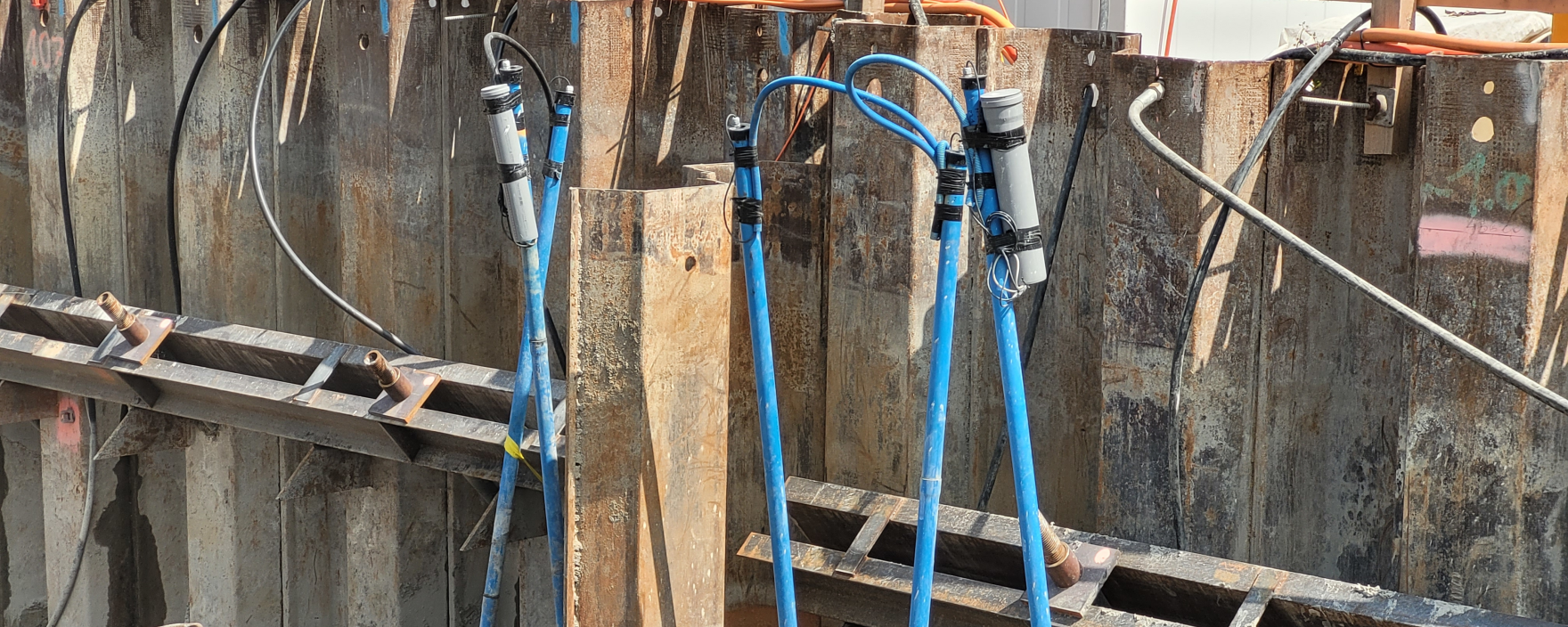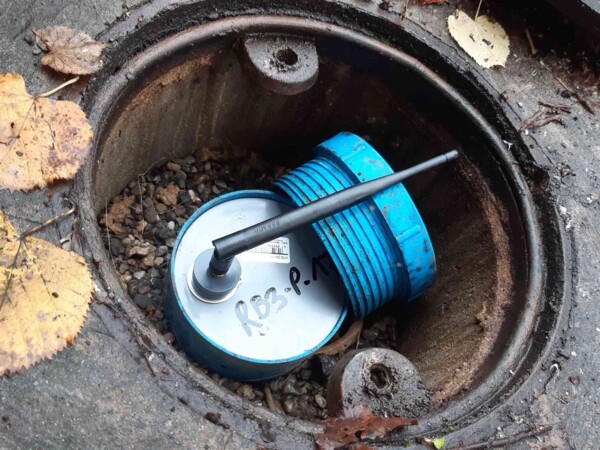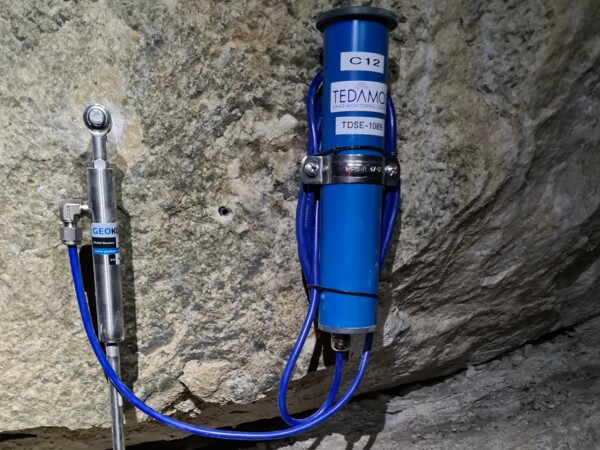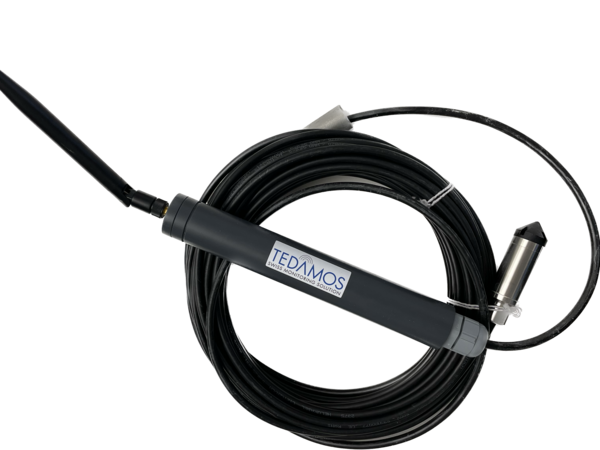
TEDAMOS LoRa
Operating principle & advantages
LoRa (Long Range) is a radio technology developed for the transmission of small amounts of data over long distances. Its high range (2-4 km in urban areas and up to 30 km in rural areas) and low power consumption make LoRa particularly suitable for sensors that only occasionally need to send a small amount of data.
LoRa sensors communicate with LoRa gateways, which send the data packets to a LoRaWAN server. This server has interfaces for IoT platforms and applications such as TEDAMOS. The Swisscom LPN (Low Power Network) is available throughout Switzerland in inhabited areas. Installing your own local gateway is only necessary in difficult conditions (e.g. tunnels, basements or outside Switzerland). In most applications, a LoRa sensor does not require any other communication components other than a LoRa radio module with an integrated battery.
One of the main advantages of this transmission technology is that the communication unit is installed directly next to the measuring sensor, eliminating the need for cabling to a measuring center. This not only saves costs for installation and removal, but is also much more reliable in operation because cable disconnections caused by construction sites, rockfall, animal bites, etc. are eliminated.
The measurement data is transmitted to TEDAMOS Web at a remotely adjustable measurement interval. The smallest transmission interval is 5 minutes; hourly transmissions are common. At an interval of several hours, a LoRa sensor can be operated for up to 5 years without a battery change.
Sensors
The following sensors are suitable for LoRa applications:
- Pressure probes (piezometers, porewater pressure transmitters)
- Crack meters (displacement transducers)
- Load cells
- CO2 measurements, air pressure, temperature, humidity, particulate matter
- Wind
- GNSS trackers (navigation solution or XYZ transmission) and many more...
In principle, all sensors that have a low power requirement and provide analog, digital or vibrating wire sensor readings can be connected to TEDAMOS LoRa.
In-house development and production
In collaboration with the ZHAW Zurich University of Applied Sciences in Winterthur, Terradata has developed its own LoRa radio modules, which are known as TEDAMOS LoRa.
We have already produced over 1,500 TEDAMOS LoRa modules in our own workshop, coupled them with a wide range of sensors and put them into operation. By producing our own modules, we can make project-specific adjustments to the radio modules at any time as needed, without the influence of external hardware suppliers.


